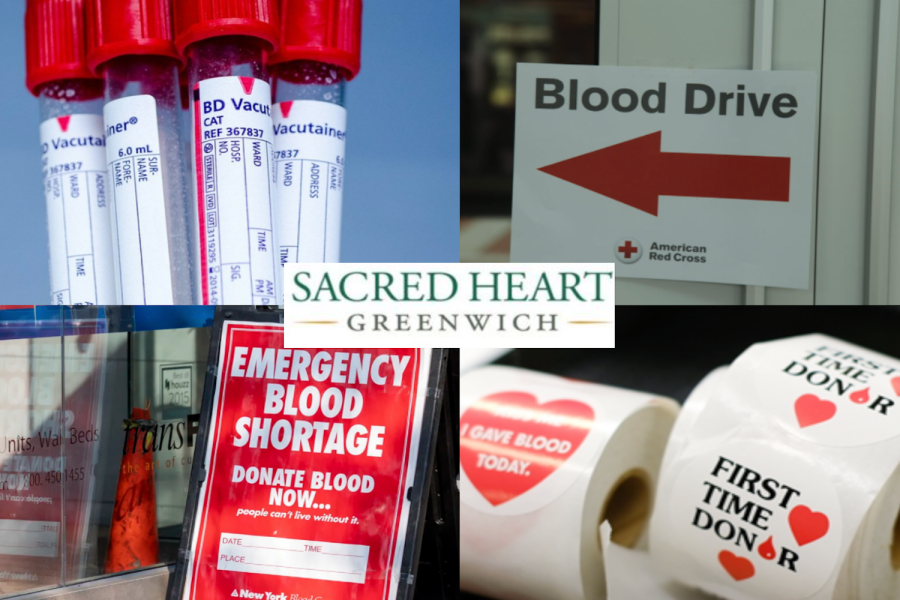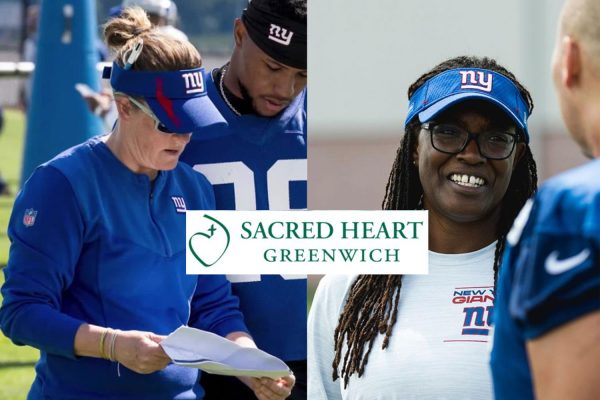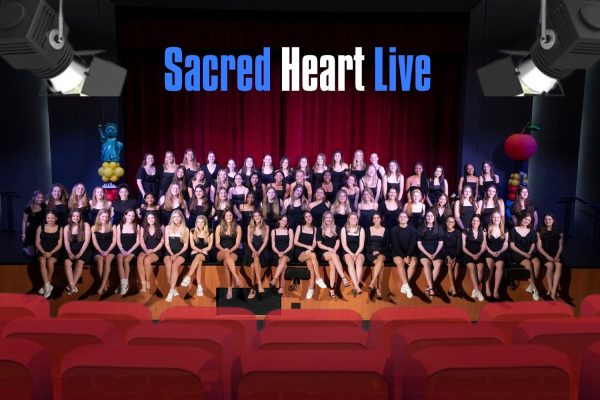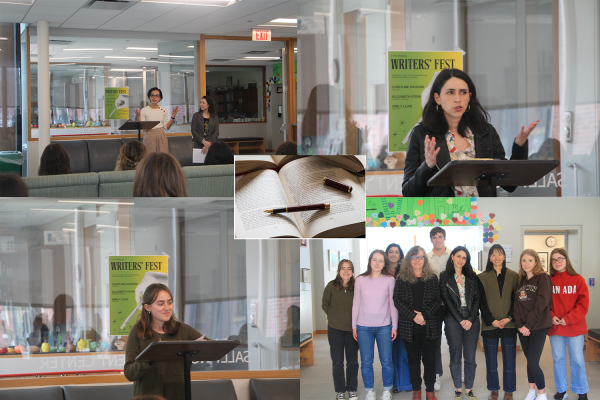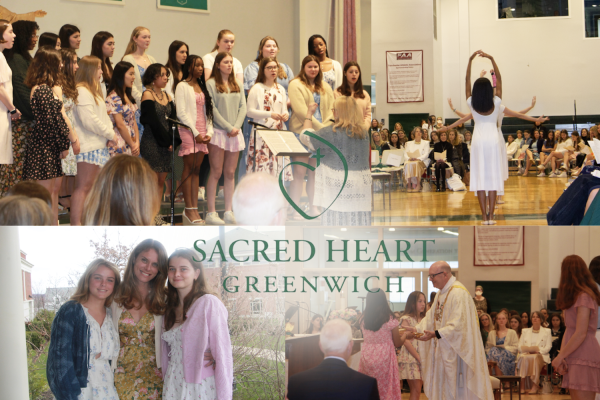Combating national blood shortages at the twelfth annual blood drive
The Sacred Heart community helps to diminish the blood shortage through participation in the blood drive.
Members of the Sacred Heart Greenwich community demonstrated Goal Three of the Sacred Heart Goals and Criteria, a social awareness which impels to action, by donating blood at the all-school blood drive March 30. The drive took place in an effort to resolve national blood shortages due to the COVID-19 pandemic. In addition to organizing the event, the Upper School Red Cross Club educated students and faculty on the significance of donating blood, if eligible.
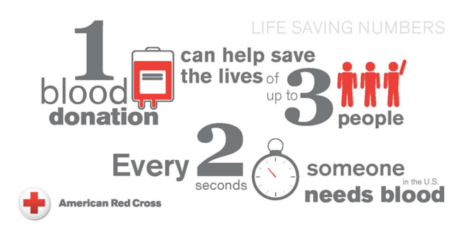
Since the start of the coronavirus pandemic, there has been a 10 percent decline in blood donations in the United States, according to redcross.org. The blood shortage has forced doctors and healthcare professionals to decide which patients receive blood transfusions and which must wait. Dr. Pampee Young, Chief Medical Officer of the Red Cross, explained the necessity of blood donations.
“Hospitals are still seeing accident victims, cancer patients, those with blood disorders like sickle cell disease, and individuals who are seriously ill who all need blood transfusions to live even as Omicron cases surge across the country,” Dr. Young said, according to redcross.org. “We are doing everything we can to increase blood donations to ensure every patient can receive medical treatments without delay, but we cannot do it without more donors. We need the help of the American people.”
Loss of blood from injury or surgery, anemia, cancer, hemophilia, and sickle cell disease are all conditions that require blood transfusions for recovery, according to clevelandclinic.org. Blood transfusions provide blood components necessary for healing. Plasma, for example, carries nutrients that the human body needs. Red blood cells transport oxygen throughout the body while platelets and cryoprecipitate help blood clot, according to clevelandclinic.org.
The Sacred Heart all-school blood drive occurred for the first time since February 2020. The Red Cross Club held a bake sale to raise money for the American Red Cross and placed posters around the school to increase awareness about the event. Members of the club also served as volunteers at the blood drive. Junior Alex Marshall, a member of the Red Cross Club, explained the importance of donating blood during such a crucial time.
“We have recently discussed that the blood shortage is a very real issue and it is important that anyone eligible should donate blood,” Alex said. “One of the main concerns about the blood shortage is that because of coronavirus, a lot of the blood drives that were supposed to happen have been canceled due to suspicion of high covid cases. Nearly 2,700 blood drives have been canceled because of the coronavirus and this is very concerning because the Red Cross gets 80 percent of their blood from these donation sites.”
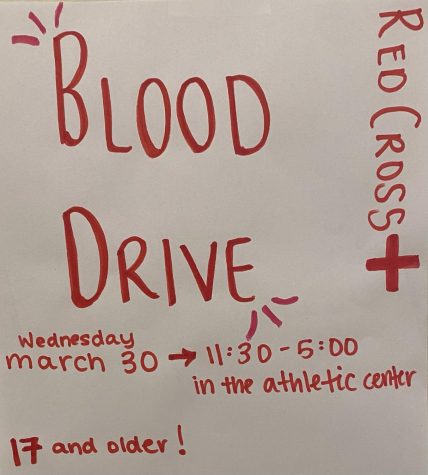
In Connecticut, people can donate blood as early as 16 years of age with parental permission. In order to maintain eligibility, a donor must weigh more than 110 pounds, attend a prior screening for medical conditions, and wait 56 days after each blood donation, according to connecticutchildrens.org. The Red Cross advises donors to drink an additional 16 ounces of water, avoid consuming fatty foods, and wear a shirt that easily rolls up above the elbows on the day of their blood donations, according to redcrossblood.org.
Approximately 25 Sacred Heart community members pre-signed up to donate blood. They also welcomed walk-in donors. Nineteen viable pints of blood went to the Red Cross to help minimize the national shortage. Senior Jules Ingram gave blood for the first time at the blood drive and hopes to donate more frequently.
“I think being fortunate enough to be healthy, and thus in a position in which an individual can give blood, provokes some form of paying it forward,” Jules said. “As we all experienced how the coronavirus pandemic affected the normalcy of our lives, we can relate to some small aspect of how the lack of normalcy in the medical world can cause major upheaval. Being educated on the current state of the blood shortage and doing what we can to mitigate the hardships it causes, in my opinion, correlates with Goal Three.”
Featured Image by Lindsay Benza ’23
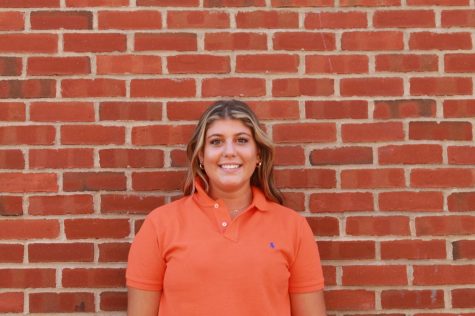
Lindsay is delighted to serve as one of the the Editors-in-Chief for the King Street Chronicle during the 2022-2023 academic year. She is eager to collaborate...

